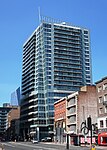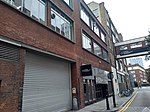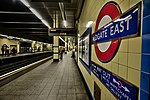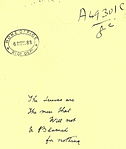The School of Art, Architecture and Design, formerly the Sir John Cass School of Art, Architecture and Design, abbreviated as The Cass and nicknamed the Aldgate Bauhaus, is an art school in Aldgate that forms part of London Metropolitan University. It was established in its present form in 2012 from the merger of Sir John Cass Faculty of Art, Media and Design and the Faculty of Architecture and Spatial Design at London Metropolitan University, though it has a history stretching back to the 1800s via its various predecessor institutions. The school took its former name from philanthropist Sir John Cass (1661–1718), who helped establish funding for education in Aldgate and whose statue is displayed in the University: however, his name was removed from the institutional name in June 2020 because of his associations with the slave trade. The school is presently based at the University's refurbished Aldgate Campus which comprises three buildings, Goulston Street, Calcutta House and The Calcutta Small Annexe in Aldgate, London.
The school offers courses across a range of subject areas: art (encompassing fine art, photography, English, creative writing, theatre and performance practice), architecture (including spatial planning and urban design) and design, which includes 3D design (fashion, textiles, furniture, product and jewellery), interiors and visual communication. Courses are provided at all levels including short courses, foundation year, undergraduate and postgraduate programmes.
Learning through practice, playing with process and working with clients; students at the School gain real-world experience in both individual and collaborative projects, engaging with professionals, communities and companies. There is a strong emphasis in the teaching studios on socially engaged architecture, art and design applied to both local and global contexts. The many specialist facilities available to students include wood, metal and plastic workshops, darkrooms and digital manufacturing technology. The school's regular exhibitions, including the famous Summer Show, regularly attract large audiences.










